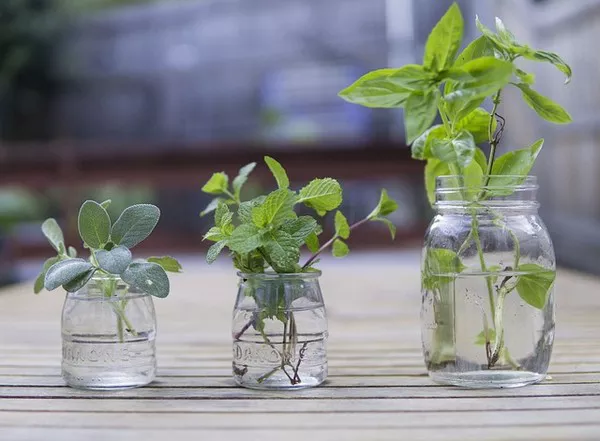Proper watering is an essential element in cultivating healthy and vibrant plants. Among the various techniques available, bottom watering has gained attention as a method that offers several benefits for plant health and growth. This technique involves supplying water directly to a plant’s root zone from beneath, allowing the roots to absorb moisture as needed. In this article, we will explore the advantages of bottom watering, the steps to execute this technique effectively, and the types of plants that benefit most from this method.
Advantages of Bottom Watering
Bottom watering offers a range of advantages over traditional top watering methods, making it a preferred choice for many gardeners and plant enthusiasts.
Root Development: Providing water from the bottom encourages plants to develop deep and robust root systems. As water is drawn upward through the soil, roots naturally extend downward in search of moisture. This results in stronger and more resilient plants capable of withstanding environmental stresses.
Prevention of Foliar Diseases: Traditional top watering can lead to water droplets settling on leaves, creating an environment conducive to the development of fungal and bacterial diseases. Bottom watering eliminates this risk by keeping foliage dry, minimizing the chances of disease outbreak.
Water Conservation: Bottom watering allows for precise water application directly to the root zone, reducing water wastage. Unlike top watering, where excess water can be lost due to evaporation or runoff, bottom watering ensures that the water is efficiently utilized by the plant.
Reduced Soil Compaction: Constant watering from the top can compact the soil surface, hindering water absorption and root growth. Bottom watering mitigates this issue by promoting even moisture distribution throughout the soil, preventing compaction.
Minimized Salinity Buildup: Over time, salts from water and fertilizers can accumulate on the soil surface during top watering, potentially harming plants. Bottom watering helps leach excess salts from the root zone, maintaining a healthier soil environment.
Steps for Effective Bottom Watering
Executing bottom watering effectively requires attention to detail and precision. Follow these steps to ensure your plants benefit from this technique:
Select Suitable Containers: Choose pots or containers with drainage holes to facilitate proper water uptake. Non-draining containers can lead to waterlogged soil, which is detrimental to plant health.
Use a Reservoir or Tray: Place a tray or reservoir beneath the container to hold water. This prevents direct contact between the pot and the water source, allowing the plant to draw water at its own pace.
Monitor Water Levels: Regularly check the water level in the tray. Avoid letting the plant sit in standing water for extended periods, as this can lead to root rot. Refill the tray when the water level begins to decrease.
Water Quality: Use room temperature, dechlorinated water to prevent shocking the plant’s roots. Watering with cold or chlorinated water can stress the plant and hinder growth.
Timing and Frequency: The frequency of bottom watering varies based on factors such as plant type, container size, and environmental conditions. Monitor the moisture level of the soil by occasionally checking its depth with your finger. Water when the top inch of soil feels dry to the touch.
Adjust for Seasonal Changes: Plants’ water requirements change with the seasons. During periods of active growth, plants may require more frequent watering, while in colder months, they may need less. Always adapt your watering routine to suit the plant’s needs.
Plants Ideal for Bottom Watering
While most plants can benefit from bottom watering, certain varieties respond particularly well to this technique due to their root structure and water preferences:
Succulents and Cacti: These plants, adapted to arid environments, have shallow but extensive root systems. Bottom watering helps prevent overwatering and supports their natural growth patterns.
African Violets: These delicate flowering plants prefer consistent moisture around their root zone. Bottom watering prevents water from touching their leaves, reducing the risk of leaf spotting.
Herbs: Culinary herbs like basil, parsley, and mint thrive with consistent moisture. Bottom watering provides even hydration, enhancing their flavor and aroma.
Seedlings and Transplants: Bottom watering is especially beneficial for young plants as it encourages them to develop strong root systems from the outset, setting them up for healthier growth.
Sensitive Plants: Some plants are sensitive to changes in humidity and moisture levels. Bottom watering can help maintain a stable root environment, benefiting plants like ferns and orchids.
Conclusion
Bottom watering is a meticulous and effective technique that can significantly enhance plant health and vitality. By providing moisture directly to the root zone, this method promotes robust root development, reduces the risk of foliar diseases, conserves water, and prevents soil compaction. When executed correctly, bottom watering can yield impressive results, making it a valuable tool in the toolkit of every gardener and plant enthusiast. By understanding the advantages of this technique and tailoring it to the specific needs of different plants, we can create thriving and beautiful green spaces that bring joy and satisfaction to our lives.


